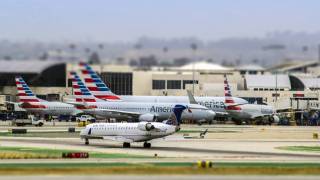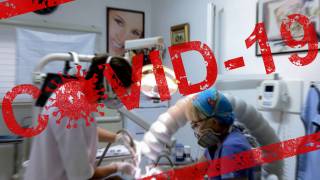U.S. FDA Issues False-Positive Antigen Test Alert

The U.S. Food and Drug Administration (FDA) alerted clinical laboratory staff and healthcare providers that false-positive results can occur with antigen tests, including when users do not follow the instructions for use of antigen tests for the rapid detection of SARS-CoV-2.
The FDA’s announcement on November 3, 2020, stated ‘antigen tests are indicated for the qualitative detection of SARS-CoV-2 antigens in authorized specimen types collected from individuals who are suspected of COVID-19 by their healthcare provider within a certain number of days of symptom onset.’
And, the ‘FDA is aware of reports of false-positive results associated with antigen tests used in nursing homes and other settings and continues to monitor and evaluate these reports and other available information about device safety and performance.’
Furthermore, laboratories should expect some false-positive results to occur even when very accurate tests are used for screening large populations with a low prevalence of infection.
The FDA issued the first Emergency Use Authorization (EUA) for a COVID-19 antigen test in May 2020. These diagnostic tests quickly detect fragments of proteins found on or within the virus by testing samples collected from the nasal cavity using swabs.
One of the main advantages of an antigen test is the speed of the test, which can provide results in minutes. The availability of these types of tests may provide the ability to test millions of people rapidly.
The FDA stated ‘healthcare providers and clinical laboratory staff can help ensure accurate reporting of test results by following the authorized instructions for use of a test and key steps in the testing process as recommended by the Centers for Disease Control and Prevention (CDC), including routine follow-up testing (reflex testing) with a molecular assay when appropriate, and by considering the expected occurrence of false-positive results when interpreting test results in their patient populations.’
In summary, the FDA recommends clinical laboratory staff and healthcare providers who use antigen tests for the rapid detection of SARS-CoV-2:
- Be aware that the Conditions of Authorization in the antigen Emergency Use Authorizations specify that authorized laboratories are to follow the manufacturer's instructions for use, typically found in the package insert when performing the test and reading test results. If you no longer have the package insert for the test you are using, you can contact the manufacturer. The authorized instructions for use for each test can also be found on the FDA's COVID-19 IVD EUA webpage.
- For example, the package insert for tests include instructions for handling of the test cartridge/card, such as ensuring it is not stored open prior to use. If the test components are not stored properly, this can affect the performance of the test.
- The package insert for tests also includes instructions about reading the test results, including the appropriate time to read the results. Reading the test before or after the specified time could result in false-positive or false-negative results.
- Be aware that processing multiple specimens in batch mode may make it more challenging to ensure the correct incubation time for each specimen. Refer to the package insert and ensure proper timing for each specimen when processing the specimen in the test device and reading the results.
- Be careful to minimize the risks of cross-contamination when testing patient specimens, which can cause false-positive results. Insufficient cleaning of the workspace, insufficient disinfection of the instrument, or inappropriate use of protective equipment (for example, failing to change gloves between patients) can increase the risk of cross-contamination between specimens with subsequent false-positive results. Consider the CDC guidance for changing gloves and cleaning work area between specimen handling and processing.
- Consider the CDC's recommendations when using antigen testing in nursing homes and other settings. For positive results, especially in low incidence counties, consider performing a confirmatory RT-PCR test within 48 hours.
And, to remember that positive predictive value (PPV) varies with disease prevalence when interpreting results from diagnostic tests. PPV is the percent of positive test results that are true positives.
The FDA will continue to keep clinical laboratory staff, health care providers, manufacturers, and the public informed of new or additional information. As disease prevalence decreases, the percent of test results that are false positives increase concluded the FDA.
The FDA continues to work with other agencies, such as the CDC and the Centers for Medicare and Medicaid Services to safeguard COVID test use in nursing homes and with test manufacturers to ensure that their instructions for use are as clear as possible to minimize the occurrence of false results.
CoronavirusToday publishes research-based news.
Our Trust Standards: Medical Advisory Committee
























